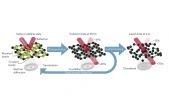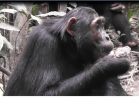Study finds brain chemicals that keep wakefulness in check
2015-07-29
(Press-News.org) Mice that have a particular brain chemical switched off become hyperactive and sleep for just 65 per cent of their normal time.
This discovery, published in the journal Neuron, could help researchers to develop new drugs that promote better sleep, or control hyperactivity in people with the medical condition mania.
Scientists altered the neurochemistry of mice to help investigate why we need to sleep, what controls our wakefulness, and how a balance between these two states influences brain functions like concentration and memory and our general health.
The chemicals they studied, histamine and GABA, are produced in a primitive part of the brain that is highly similar in mice and humans.
The team of scientists was led by Dr Stephen Brickley, Professor Nick Franks and Professor Bill Wisden from the Department of Life Sciences and the Centre for Neurotechnology at Imperial College London.
Professor Wisden said, "Sleep is essential for health. We have to do it every day. But nobody yet knows why."
Scientists already know the chemical histamine sends signals to the brain to make it awake, which is why antihistamines are associated with drowsiness. The new research suggests that the chemical GABA acts against histamine, like a chemical 'brake' preventing wakefulness being too intense.
The researchers found that GABA and histamine are made in the same brain cells, called histamine neurons, which led the scientists to question its function. They altered the levels of the GABA produced by the mice's brains and measured what changes this had on their brain activity over the day and night.
Mice without the GABA chemical developed characteristics similar to a medical condition called mania, in which patients experience restlessness and sleeplessness. In humans these are often also symptoms of bipolar disorder, which affects around 2.4 million people in the UK.
"Wakefulness stimulated by histamine may be too much of a good thing, and so the brain has a built in brake on histamine's wake-inducing actions," said Dr Brickley.
The scientists found that compared with normal mice, those without GABA ran twice as far and twice as fast, and maintained or even increased their overall activity over a 30 minute period.
The mice also stayed awake much longer in the day, when they would otherwise be asleep. When they did sleep, the mice experienced just 65 per cent of the normal amount of non-REM (Rapid Eye Movement) sleep, a heavy sleep state with no dreaming.
"What particularly surprised us was how little the mice were affected by sleep deprivation," said Professor Franks.
"Normally mice that lose 5 hours of sleep would sleep for longer following this deprivation, and we would see a much lower level of activity. These mice kept up their hyperactive state over the following 16 hours they were awake. They didn't appear to need any recovery sleep at all."
The scientists have begun new work with mice to investigate the link between lack of sleep and memory loss. They hope this will lead to a better understanding of the link between poor sleep and mental health issues in humans.
INFORMATION:
This research was funded by the Medical Research Council (MRC), Biotechnology and Biological Sciences Research Council (BBSRC) and the Wellcome Trust.
ELSE PRESS RELEASES FROM THIS DATE:
2015-07-29
From slight sparrows to preening peacocks to soaring falcons, birds have long been known to possess distinct abilities in their sense of smell, but little has been known about the evolution of olfaction.
Now, a large comparative genomic study of the olfactory genes tied to a bird's sense of smell has revealed important differences that correlate with their ecological niches and specific behaviors.
Authors Agostinho Antunes et al., in a new study published in the advanced online edition of Molecular Biology and Evolution, analyzed olfactory receptor genes (OR gene ...
2015-07-29
Physicists at the University of York have revealed a new understanding of nucleosynthesis in stars, providing insight into the role massive stars play in the evolution of the Milky Way and the origins of the Solar System.
Radioactive aluminium (aluminium-26, or Al26) is an element that emits gamma radiation through its decay enabling astronomers to image its location in our galaxy. Studying how Al26 is created in massive stars, scientists have distinguished between previously conflicting assumptions about its rate of production by nuclear fusion.
Funded by the Science ...
2015-07-29
University of Adelaide research has shown for the first time that, despite not having a nervous system, plants use signals normally associated with animals when they encounter stress.
Published today in the journal Nature Communications, the researchers at the Australian Research Council (ARC) Centre of Excellence in Plant Energy Biology reported how plants respond to their environment with a similar combination of chemical and electrical responses to animals, but through machinery that is specific to plants.
"We've known for a long-time that the animal neurotransmitter ...
2015-07-28
Bari, Italy, July 28, 2015 -- A new study by researchers at the University of Bari Aldo Moro, Bari, Italy, Geriatric Unit & Laboratory of Gerontology and Geriatrics, IRCCS "Casa Sollievo della Sofferenza", San Giovanni Rotondo, Foggia, Italy, and Istituto Superiore di Sanità (ISS), Roma, Italy, estimates the association between change or constant habits in coffee consumption and the incidence of mild cognitive impairment (MCI), evaluating 1,445 individuals recruited from 5,632 subjects, aged 65-84 year old, from the Italian Longitudinal Study on Aging (ILSA), a population-based ...
2015-07-28
Rewritable CDs, DVDs and Blu-Ray discs owe their existence to phase-change materials, those materials that change their internal order when heated and whose structures can be switched back and forth between their crystalline and amorphous phases. Phase-change materials have even more exciting applications on the horizon, but our limited ability to precisely control their phase changes is a hurdle to the development of new technology.
One of the most popular and useful phase-change materials is GST, which consists of germanium, antimony, and tellurium. This material is ...
2015-07-28
Hercules, CA -- July 28, 2015 -- Droplet Digital PCR (ddPCR™) has been shown to be a useful tool for the identification of microRNAs (miRNA) circulating in the blood that could serve as potential cancer biomarkers. A study in the journal Oncotarget further supports these findings and identifies a novel miRNA that shows great potential for breast cancer diagnosis. These findings confirm the potential clinical utility of ddPCR technology to precisely and reliably quantify cell-free miRNAs. The study also emphasizes that sample type as well as its preparation are critical ...
2015-07-28
ANN ARBOR--Secondary students found healthier foods on more lunch menus in 2013 than in 2011, resulting in fewer nutrition disparities for small schools or those with racially diverse student bodies.
The findings by University of Michigan researchers show significant improvements made in the National School Lunch Program at public middle and high schools in 2013 after many years of meal disparities based on school size or demographics.
"While these improvements are encouraging, continued progress is needed," said Yvonne Terry-McElrath, a researcher at the U-M Institute ...
2015-07-28
Wild chimpanzees in the forests of Uganda are increasingly eating clay to supplement the minerals in their diet, according to a long-term international study published in the early version of the journal PLOS ONE. The paper led by the University of Oxford describes how the researchers observed wild chimpanzees in the Budongo forest eating and drinking from clay pits and termite mounds. The paper concludes that this change in diet may be partly due to the widespread destruction of raffia palm trees that chimps relied on for their minerals in the past. However, the main reason ...
2015-07-28
(SACRAMENTO, Calif.) -- UC Davis health economists have for the first time projected the total costs of caring for all people with autism spectrum disorder (ASD) in the U.S. for the current calendar year and in 10 years if effective interventions and preventive treatments for the condition are not identified and widely available.
Their forecasts for ASD-related medical, nonmedical and productivity losses are $268 billion for 2015 and $461 billion for 2025. The researchers noted that these estimates are conservative and, if ASD prevalence continues to increase as it has ...
2015-07-28
The continuous quality improvement (CQI) approach was introduced on a pilot basis to 30 sites across Uganda. This approach identified barriers in achieving national standards for voluntary medical male circumcision (VMMC), identified possible solutions to overcome these barriers, and carried out improvement plans to test these changes while collecting performance data to objectively measure whether they had bridged gaps.
Teams used a 53-indicator quality assessment tool adapted by the Ministry of Health and based on the WHO VMMC Quality Toolkit as a management tool to ...
LAST 30 PRESS RELEASES:
[Press-News.org] Study finds brain chemicals that keep wakefulness in check

